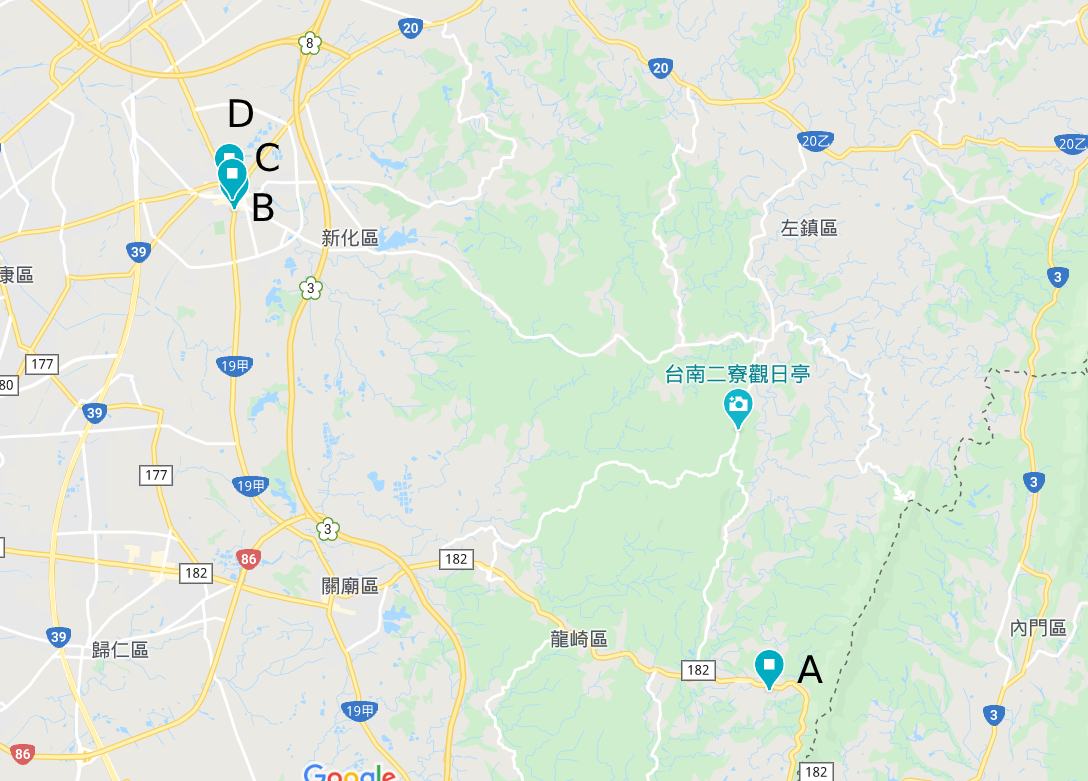

-
- 111th Academic Year
- The Avenue of NCKU Heritage – Area of Cultural Assets
- The Avenue of NCKU Heritage – Area of Environment and Ecology
- From country to city: Taveron and Han integration
- Kyrie: Pestilence and faith in the salty area
- Highlighting Western Chu-Wei
- Ginza: Commercial tracks from harbors to modern streets
- Tavocan and the Town of Hills
- The Museum: Ecological village and eco-museum
- The Stories about Major South Gate of Fu-Chen (Tainan)
- Modern new generation
- 110th Academic Year
- The Route of NCKU Students - The Cultural Assets Area
- NCKU Students' Route – Area of Cultural Assets
- Migration and Settlement of the Siraya Tribe
- Zengwen Creek’s nine bends and 18 turns, with astronomy, hydrology and humanities
- Exploring the Old Industries of Tainan City
- Journey of Beauty
- The Narrations of Water Resources, Agriculture and Livestock Industries
- Exploring Old Yuejin Harbor Area
- Lâu-Nuā Sió Sai Kha
- Highlighting Western Chu-Wei Area, Yu-Ler Street & Eastern Gate
- 109th Academic Year
- NCKU Students' Route – Area of Cultural Assets
- NCKU Students' Route – Area of Environment and Ecology
- Migration and Settlement of the Siraya Tribe
- Old Taijiang Inner Sea: Its Previous and Current Existence
- Lâu-noā Sió-sai-kha
- Exploring the Old Industries of Tainan City
- The Exploitation of the Works of Nature-Journey about The Frost and The Flower of Salt
- Badlands and the Mountain City
- Age-old Stories from the South of the City
- The Magnificent of Zheng-Xing Street
- 108th Academic Year
- The Route of NCKU Students─The Cultural Assets Area
- NCKU Students' Route – Area of Environment and Ecology
- Ecology of Fishery and Sea Salt Harvesting─ The Nature and Culture of Tai-Jiang Lagoon
- Migration and Settlement of the Siraya Tribe
- Age-old Stories from the South of the City
- Exploring the Old Industries of Tainan City
- The Narrations of Water Resources, Agriculture and Livestock Industries
- Technology and Humanities Science Park and Cultural Archeology
- From Kū-Lâu to Sin-Lâu Hospital
- Folk Delicacy around Minor West Gate Area
- 107th Academic Year
- The Avenue for NCKU Students
- Exploring Old Occupations in Tainan
- Secret Literary Path of Tainan
- Migration and Settlement of the Siraya Tribe
- Old Tai Jang Inner Sea: Its Previous and Current Existence
- Five-Canal Harbor Area: The Water Gods and Import-Export Tradesmen
- Tradition and Innovation: Zhengxing Street and the Grand Market(Da Caishi)
- The Water Resource of Tainan Area
- The Grace of Yanshui Harbor: Rejuvenation of Yanshui and Hopi Settlements
- 106th Academic Year
- The Avenue of NCKU Students
- Gate of Urn-Shaped Castle and the Stony Plates
- Siraya People’s Migration and Their Journey to Settlement
- Zeelandia and the Retrospective Anping
- Old Taijang Inner Sea (Taijang Nei Hai ) : Its Previous and Current Existence
- Tradition and Innovation- Zhengxing Street and the Grand Market (Da Caishi )
- Qing Dynasty Government Official’s Trail-Chunan Old Street and Zhenbei Fang
- Five-Canal Harbor Area, the Water Gods and Import-Export Tradesmen
- Fantastic Trips to Know Sugar and Salt production
- Chikan Park Area and Historical Traces
- Secret Garden of Literature- From Taiwan Administration (Taiwan Fu) to Tainan Prefecture Hall (Tainan Zhou Ting)
- The Water World of Tainan Area
- 111th Academic Year
-
-
-
Badlands and the Mountain City
Route Introduction

-
Traceback The Moon World life from the Tavocan
Since the Ming and Zheng Dynasties, Han immigrants have been in Tainan's hilly area to develop in the inner mountains. At that time, it is a crucial city to enter the mountainous regions, Tavocan gradually grew. Tavocan means "the path to the mountain" in the Siraya language. Siraya is the earliest recorded ethnic group living in Tainan since the written history of Taiwan. The name of Siraya has appeared in the documents under the Dutch rule period. Siraya grows in this land; it is related closely to the shaping and development of the history and culture of greater Tainan.
In the Japanese rule period, Tavocan became a vital stronghold to develop inner mountains and renamed "Xin-Hua." The old streets, Civil Office, Butokuden of Xinhua were set up during the Japanese rule period. Therefore, it confirms that Xin-Hua is the primary city to examine Japanese development in Tainan's hilly areas.
As they went deep into the mountainous areas, the Han people's influence extended to Kaohsiung's Nei-Men area in the early Qing Dynasty. However, due to landform being mudstones, Badlands, barren soil, and the population's mobility, it forms a unique transportation network and lifestyle different from other areas in Taiwan. The mudstones and Badlands are distributed widely across Tainan, Kaohsiung, and Taitung cities. The surface area of more than one thousand square kilometers is the largest tropical limestones Badlands terrain was known to the world.
This route will lead students to the hilly and mountainous areas in Tainan. In addition to understanding the influence of Badlands on Tainan culture, Xin-Hua District is a proper location to learn about the mountain city culture. It is different from the port city in Tainan City.
-